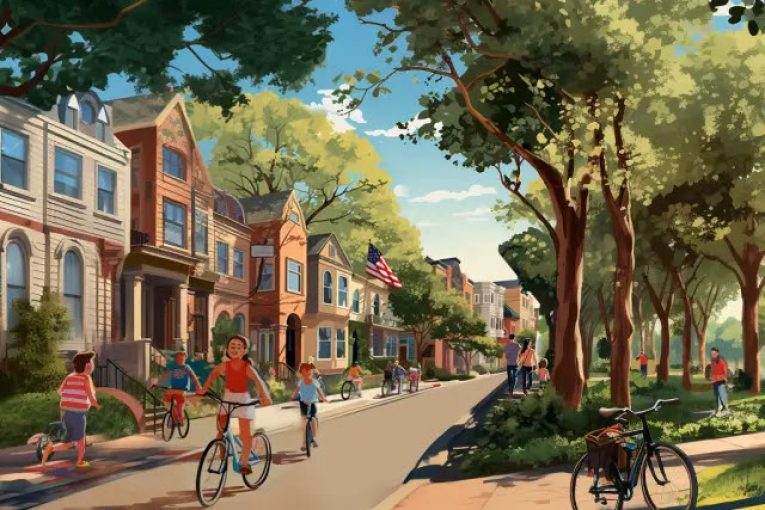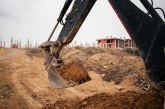

By David M. Greenwald
Executive Editor
Solano County – When a group of investors purchased a large expanse of land in Solano County—50,000 acres—near Travis Air Force Base, people immediately went to the conspiracy theory. We have now learned it is a much more mundane endeavor—they are looking to build housing, actually a new city.
In today’s environment, keeping something quiet leads immediately to runaway speculation and conspiracy theories.
As California Forever, the parent company of Flannery Associates, pointed out on their new website launched on Thursday, “Over the last few years, Flannery has purchased over 50,000 acres in Solano County. To date, our company has been quiet about our activities. This has, understandably, created interest, concern, and speculation.”
In fact, as Congressman John Garamendi noted, the secrecy was taken as a threat.
The NY Times pointed out, “That nobody in the company tried to assuage those fears — most likely because they were worried that revealing themselves would increase the price of land — has created a long line of annoyed elected officials.”
“We got the F.B.I. and Treasury involved,” Garamendi explained recently.
In reality this is about the housing crisis.
They note, “Now that we’re no longer limited by confidentiality, we are eager to begin a conversation about the future of Solano County—a conversation with all of you. Like much of our state, Solano County faces many challenges—but also presents countless opportunities.”
The pointed out that “81% of Solano parents we surveyed said that their kids won’t be able to find a future in their own neighborhood when they grow up.”
They added, “These challenges often have separate, unrelated causes. But they could share a common solution. Instead of watching our kids leave, we have the opportunity to build a new community that attracts new employers, creates good paying local jobs, builds homes in walkable neighborhoods, leads in environment stewardship, and fuels a growing tax base to serve the county at large. And, Solano has the right location for a project like this in the eastern part of the county.”
This is actually what a few people have suggested over the last five years or so of discussion on housing. Facing NIMBY opposition to building in existing communities—build a new one.
Of course, the middle of Solano County might not be where others had in mind. And their journey figures to be a tough one.
As the NY Times pointed out, Jan Sramek, who grew up in the Czech Republic, figures to have a profitable campaign, but “it could also be longer, harder and, in all likelihood, nastier.”
Writes the Times, “The revelation last week that Mr. Sramek is leading a group of Silicon Valley moguls in an audacious plan to build a new city on a rolling patch of farms and windmills in Northern California was the unofficial beginning of what promises to become a protracted and expensive political campaign.”
But housing figures to be difficult. There is a reason why we have a housing crisis.
“In a state where land politics are so difficult it can take years to build a duplex, it could be a decade of process before a shovel is even lifted for the project,” the Times warns.
And such a timeline (likely decades) figures to “test the patience of investors—including the venture capitalists Michael Moritz, Marc Andreessen and Chris Dixon, as well as Reid Hoffman, the LinkedIn co-founder, venture capitalist and Democratic donor, and Laurene Powell Jobs, founder of the Emerson Collective—who are used to the fast and lightly regulated world of technology.”
Solano County “has a longstanding slow-growth ordinance that county voters would probably have to override before any major building could begin.”
Then you have a whole host of environmental rules— “not to mention the local planning commission and board of supervisors who oversee land use in Solano County.”
The Times noted, “Some experienced developers say the project’s chances are so remote that they will be stunned if it comes to fruition.”
They then spoke with local developer Mark Friedman.
“I hope they succeed,” said Mark Friedman, a longtime real estate developer in Sacramento, “but this just seems like a lot of tech guys with a lot of money and a ton of hubris diving into another business that they can’t possibly understand.”
But Sramek has a different reaction: “This idea of building a new community and economic opportunity in eastern Solano seemed impossible on the surface, but after spending a lot of time learning about Solano and its people, Jan became convinced that with a thoughtful design, the right long-term patient investors, and strong partnerships with all stakeholders, there would be an opportunity to build a remarkable place for Solano residents, both current and the many generations to come.”
How possible is this project?
I know how a lot of local people I have spoken have reacted as well.
Then again there are others who suggested that a project maybe on the south side of UC Davis—a location I have always thought might be interesting as well—would be more fruitful.
Now you would think in a state that is attempting to build its way out of a housing crisis, someone in the legislature might take an interest in streamlining the approval process for someone willing to build housing?
Maybe this points the way toward a new approach to solving the housing crisis. In the meantime, if I were Davis, I wouldn’t count on it changing our immediate future.







This proposal is just nuts. It has almost zero chance of approval by the voters, if the county officials even deign to put it before us. The last time a rich Bay Area investor tried this (a new city that would have been right next to Winters, but in Solano County) in the 1980s, we voted it down by an overwhelming margin twice and enacted the county-wide vote requirement that prevails in Solano County. They don’t have any valid water supply, it’s one of the windiest sites in the state, and they’ve already succeeded in alienating nearly every public official who might have been an ally. Hubris, egoism, and plain political stupidity are all on full display here.
I won’t say it can’t be done, but I will say that it’s been tried before, and on some of the same land. The 1913 effort to build Solano City was launched, with big promotions and lots of big promises. A canal was dredged to the site, and a huge reservoir built (remnants of both are still extant). It went bust the same year when the promoters ran out of money.
I wish I owned 50,000 acres in Solano County. Seems like no matter what happens its a good investment by some wealthy people from Central California. Yet the greetings received by these new neighbors from current Solano County residents hasn’t seemed to be a welcome wagon kind of embrace. I wonder if Ted Turner got this kind of greeting when he bought up all that land in Montana or if Blue Californians are ruder than Red Montanas .
As for encroaching on Travis Air Force Base its a concern, but, with 50,000 acres, its one that should be easily managed.
Water? I don’t know, and I have no information besides what has been published, but with 50,000 acres they could have easily acquired properties with Solano Irrigation District water rights. If not, water rights can be purchased so it seems that the objections from the locals is simply more of the same territorial aversion to new comers that creates Californias homeless problem.
No, so far as I can tell from the maps that have been published in the Chronicle, none of these parcels are in Solano Irrigation Distict. I don’t think they’re even in Main Prairie Water District. It’s almost entirely unirrigated grazing land along Hwy 12, except for a number of parcels that literally surround Travis AFB. Water will definitely be a problem, probably the main problem, they’ll face.